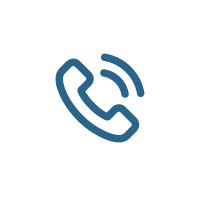IoT Central
Azure IoT Central: Simplifying IoT Solutions at Scale
Technical Overview
Imagine a manufacturing company that wants to monitor thousands of IoT devices deployed across multiple factories worldwide. They need a solution that not only simplifies device connectivity but also provides real-time insights, scalability, and security. This is where Azure IoT Central shines. It is a fully managed IoT application platform that abstracts the complexities of IoT development, enabling organisations to focus on their business goals rather than the underlying infrastructure.
At its core, Azure IoT Central is built on a multi-tenant architecture, ensuring scalability and reliability. It leverages Azure's robust infrastructure to handle millions of devices and messages seamlessly. The platform provides pre-configured templates for common IoT scenarios, such as predictive maintenance, energy management, and remote monitoring, allowing businesses to accelerate their IoT deployments.
One of the standout features of IoT Central is its ability to integrate with other Azure services. For instance, you can use Azure Stream Analytics for real-time data processing, Azure Data Lake for long-term storage, and Power BI Embedded for advanced visualisations. Additionally, IoT Central supports device provisioning through the IoT Hub Device Provisioning Service (DPS), ensuring secure and scalable onboarding of devices.
Scalability and Data Processing
Azure IoT Central is designed to handle IoT solutions of any scale. Whether you're managing a handful of devices or millions, the platform ensures consistent performance. It uses Azure IoT Hub as its backbone for device communication, supporting protocols like MQTT, AMQP, and HTTPS. This flexibility allows a wide range of devices to connect seamlessly.
Data processing in IoT Central is streamlined through built-in analytics and rule-based actions. For example, you can set up rules to trigger alerts or workflows when specific conditions are met, such as a temperature sensor exceeding a threshold. These rules can integrate with Azure Logic Apps or external systems via webhooks, enabling automated responses to critical events.
Integration Patterns
IoT Central supports various integration patterns to fit diverse business needs:
- Data Export: Export telemetry data to external systems for advanced analytics or storage. This can be done in near real-time or in batch mode.
- Application Programming Interfaces (APIs): Use REST APIs to interact with IoT Central programmatically, enabling custom application development.
- Event Routing: Route device telemetry and events to Azure Event Hub or Azure Service Bus for downstream processing.
Advanced Use Cases
Azure IoT Central is not just for basic IoT scenarios. Its capabilities extend to advanced use cases such as:
- Predictive Maintenance: Analyse historical and real-time data to predict equipment failures and schedule maintenance proactively.
- Smart Cities: Monitor and manage city infrastructure like traffic lights, waste management systems, and public transportation.
- Healthcare: Enable remote patient monitoring and improve healthcare outcomes through connected medical devices.
Business Relevance
In today’s competitive landscape, businesses need to innovate rapidly while keeping costs under control. Azure IoT Central addresses these challenges by providing a ready-to-use platform that reduces development time and operational complexity. By leveraging IoT Central, organisations can:
- Accelerate Time-to-Market: Pre-built templates and integrations enable faster deployment of IoT solutions.
- Reduce Costs: A fully managed platform eliminates the need for extensive infrastructure management, lowering operational expenses.
- Enhance Security: Built-in security features, such as role-based access control (RBAC) and device authentication, ensure data integrity and compliance.
Moreover, IoT Central’s pay-as-you-go pricing model allows businesses to scale their solutions without incurring significant upfront costs. This flexibility is particularly valuable for startups and small-to-medium enterprises (SMEs) looking to adopt IoT without overextending their budgets.
Best Practices
To maximise the benefits of Azure IoT Central, consider the following best practices:
- Define Clear Objectives: Identify the specific business problems you aim to solve with IoT and align your solution accordingly.
- Leverage Templates: Use the pre-configured templates as a starting point to accelerate development and ensure best practices are followed.
- Implement Security Measures: Use device authentication, encryption, and RBAC to protect your IoT ecosystem from threats.
- Monitor and Optimise: Continuously monitor device performance and application metrics to identify areas for improvement.
- Integrate with Other Azure Services: Combine IoT Central with services like Azure Monitor and Azure Logic Apps to enhance functionality and gain deeper insights.
Relevant Industries
Azure IoT Central is versatile and can be applied across various industries:
- Manufacturing: Optimise production lines, monitor equipment health, and reduce downtime through predictive maintenance.
- Retail: Enhance customer experiences with smart shelves, inventory tracking, and personalised promotions.
- Healthcare: Enable remote patient monitoring, track medical equipment, and improve operational efficiency.
- Energy and Utilities: Monitor energy consumption, optimise grid performance, and integrate renewable energy sources.
- Transportation: Track fleet performance, optimise routes, and improve safety through connected vehicles.
Adoption Insights
With an adoption rate of 0.85%, Azure IoT Central is gaining traction among organisations looking to simplify their IoT deployments. By joining this growing community, you can leverage a proven platform to accelerate your IoT initiatives and stay ahead of the competition.
